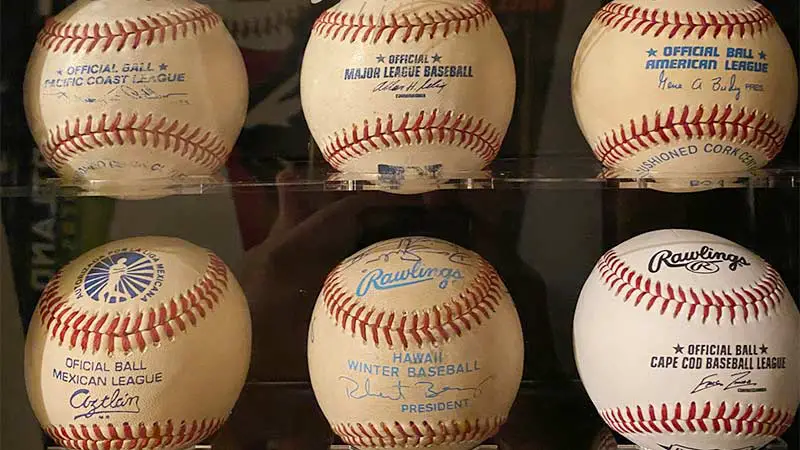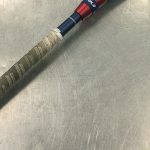Ever wondered why baseballs are swapped out so frequently during a game? It’s not just a quirky tradition; there’s a lot more to it.
Over the years, the game has evolved, and so have the reasons for changing baseballs. From maintaining fair play to ensuring player safety, the practice plays a crucial role in modern baseball.
In the late 19th century, changes in pitching conditions and the increased frequency of home runs highlighted the need for consistent ball quality.
Back then, fielding errors were common, and walks had become more frequent than errors. Today, a fresh baseball ensures that every pitch and hit is as fair and predictable as possible, maintaining the integrity of the game.
The History Behind The Rule
The frequent changing of baseballs during Major League Baseball (MLB) games is driven by several important reasons that ensure fairness and safety in the game:
Consistency and Fairness
Baseballs are swapped out regularly to maintain a consistent quality throughout the game. A new baseball behaves predictably and uniformly, ensuring that pitchers can grip and control the ball effectively.
This consistency is crucial for fair competition between pitchers and batters. Worn or damaged balls can have altered flight patterns, affecting the fairness of play.
Moreover, fresh baseballs are essential for safety, reducing the risk of injuries caused by irregular ball behavior.
Additionally, new baseballs are needed after foul balls, home runs, or scuffing incidents, ensuring that each ball meets official standards. This practice enhances the viewing experience and maintains the sport’s integrity.
Player Safety
As baseballs are used, they can become scuffed, discolored, or altered in other ways that may affect their flight path or how they interact with the fielders.
This can potentially compromise player safety, as unpredictably behaving baseballs could lead to injuries for fielders or even pitchers. By changing baseballs frequently, MLB reduces the risk of injuries caused by unpredictable ball behavior.
Furthermore, consistent ball changes ensure a fair playing field for both teams, as any anomalies in the baseballs are minimized. This regular swapping also aligns with MLB’s maintenance of game integrity and standards.
Historical Evolution
The practice of changing baseballs has evolved over time to address changes in the game itself. In the late 19th century, for example, changes in pitching strategies and the increasing frequency of home runs highlighted the need for consistent ball quality.
Today, with advanced metrics and a focus on fair play, ensuring that every pitch and hit is as fair and predictable as possible is paramount.
Umpires routinely replace baseballs for a variety of reasons: when they become scuffed, discolored, or hit out of play.
This not only maintains the integrity of the game but also helps pitchers maintain control and hitters achieve accurate results.
Integrity of the Game
Keeping a fresh baseball in play helps maintain the integrity of the sport. It ensures that outcomes are not influenced by irregularities in the equipment used, reinforcing the fairness of competition at the highest level of professional baseball.
Frequent ball changes also account for wear and tear caused by powerful hits and adverse weather conditions. This practice upholds safety standards, ensuring that both players and the game remain at their peak.
Impact of Baseball Condition on Gameplay
The condition of a baseball can significantly impact gameplay in various ways, influencing both pitchers and batters:
Role of Scuffs and Marks
Scuffs and marks on a baseball can drastically alter gameplay. A scuffed ball can lead to unpredictable pitches because of irregular airflow over its surface.
This inconsistency challenges batter perception, reducing their chances of making contact. Conversely, pitchers gain an unfair advantage by manipulating ball spin, making it harder for batters to predict ball movement.
Rule 301 addresses this by strictly prohibiting foreign substances and intentional damage. This ensures a level playing field and maintains the integrity of the game.
Additionally, worn balls can affect player safety, as they are harder to see and might lead to more frequent injuries. Therefore, regularly rotating fresh baseballs is essential for fair play and player protection.
Impact When Hit Out of Play
When a baseball is hit out of play, replacing it ensures game integrity. Balls that land in the stands or other non-play areas accumulate dirt and scuffs, which affects performance.
Clean baseballs prevent pitchers from exploiting irregularities that could skew the game’s fairness. Frequent ball changes maintain consistent conditions, fostering a level playing field for both teams.
Umpires enforce these practices to uphold high standards in every professional game. Additionally, new baseballs enhance visibility for both players and fans, reducing the chance of errors due to worn markings.
This practice also contributes to player safety, as well-maintained balls are less likely to cause injuries.
Regulations and Practices in Baseball Replacement
In Major League Baseball (MLB), regulations and practices regarding the replacement of baseballs are carefully structured to ensure fairness, consistency, and safety throughout the game.
Here are the key aspects:
Historical Context Behind Baseball Replacement Rules
Focusing on player safety and game fairness, Major League Baseball (MLB) implemented baseball replacement rules due to Ray Chapman’s death in 1920.
Chapman, a Cleveland Naps player, was struck in the head by a pitch he reportedly never saw. This led to his death 12 hours later. With dirty or scuffed baseballs, batters face difficulty seeing the ball, increasing injury risks.
Before this tragedy, pitchers routinely manipulated baseballs by spitting on them, rubbing them with dirt, or using other foreign substances. This made balls difficult to hit and contributed to unpredictable gameplay.
MLB addressed this by introducing Rule 301, banning the intentional discoloration or damaging of balls. Violating this rule leads to the offender’s ejection and a mandatory ten-game suspension.
Current MLB Policies
Modern MLB enforces strict policies on baseball replacement to maintain fairness and safety. Umpires must replace baseballs that become dirty, scuffed, or otherwise damaged.
Teams can’t tamper with balls during games by rubbing with soil or other substances. Frequent ball changes help uphold consistent conditions for both batters and pitchers.
A key principle is transparency in ball appearance and condition, leveling the playing field for all participants.
When a ball hits the dirt, it’s immediately replaced to prevent pitchers from gaining an unfair advantage through unpredictable pitches. Adhering to these standards ensures safe, fair competition and game integrity.
Frequently Asked Questions
Why did Ray Chapman’s death impact MLB rules?
Ray Chapman’s death in 1920 highlighted the risks of using dirty baseballs, leading to MLB’s Rule 301 to ensure player safety and fair gameplay.
What is Major League Baseball’s Rule 301?
Rule 301 prevents intentional ball damage by requiring frequent ball changes, safeguarding player safety and maintaining fair play.
How do dirty or scuffed balls affect the game?
Dirty or scuffed balls can hinder a batter’s visibility and a pitcher’s grip, negatively impacting their performance.
How does Rule 301 address unfair gameplay?
Rule 301 deters pitchers from manipulating baseballs with foreign substances, ensuring predictable and fair gameplay.
What are the consequences of violating Rule 301?
Violating Rule 301 results in ejection from the game and possible suspension, reinforcing its importance.
Conclusion
Baseball’s commitment to maintaining fair play and player safety is evident in its strict ball replacement policies. By ensuring that every ball used is in optimal condition, MLB upholds the integrity of the game.
This attention to detail not only protects players but also guarantees a consistent and transparent playing field.
So next time you see an umpire switching out a ball, you’ll know it’s all part of preserving the sport’s highest standards.
Additionally, regularly replacing baseballs helps prevent any alterations in ball properties that can affect gameplay.
This ensures that pitchers, batters, and fielders have a uniform experience, enhancing the quality of the sport.








Pat Bloom